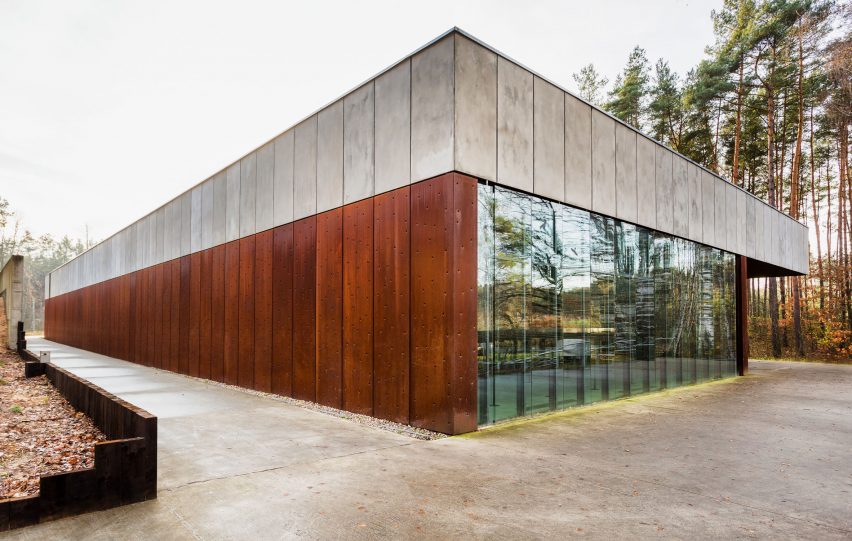
Museum in Palmiry by WXCA
Each bullet-sized hole piercing the skin of this museum by architects WXCA in Palmiry, Poland, represents a Polish civilian murdered there during the holocaust.
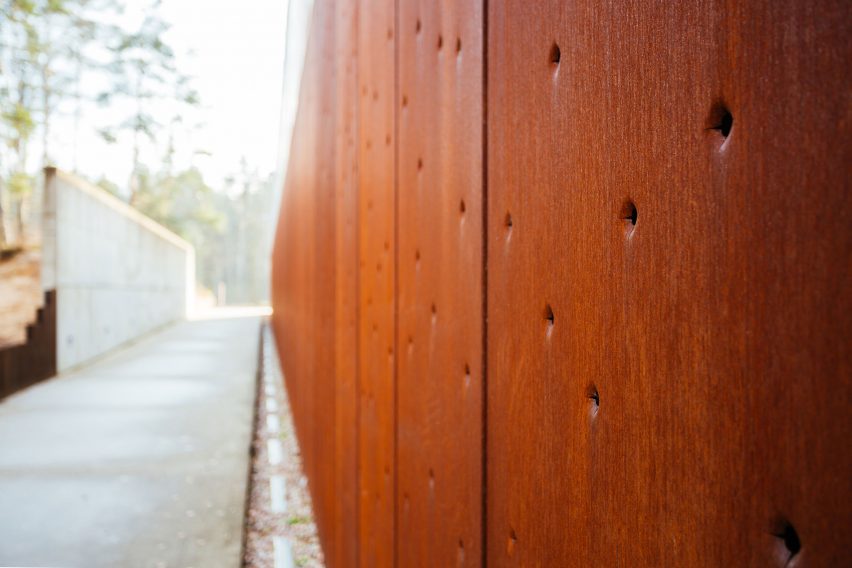
The punctured panels surrounding the exterior of the Palmiry Museum are made of rusted steel.
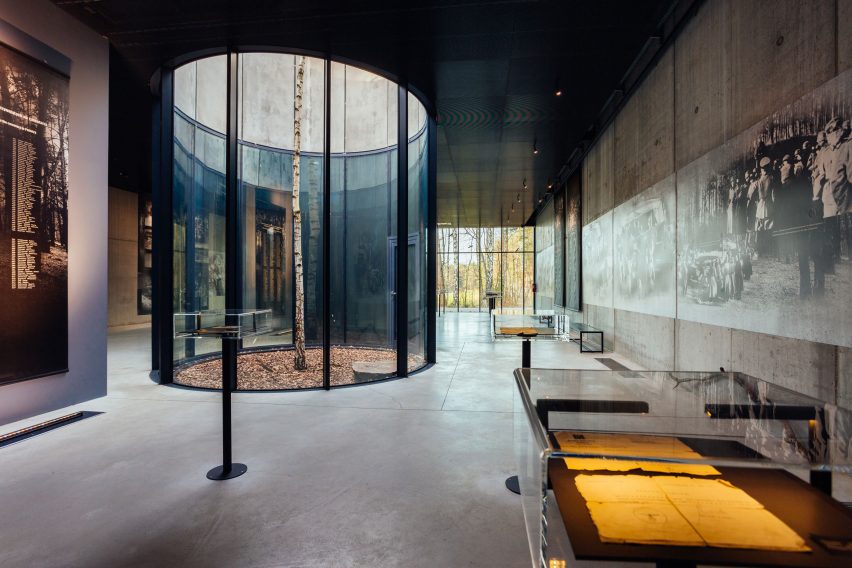
The museum showcases photographs, documents and memorabilia connected with victims of Nazi executions during World War II.
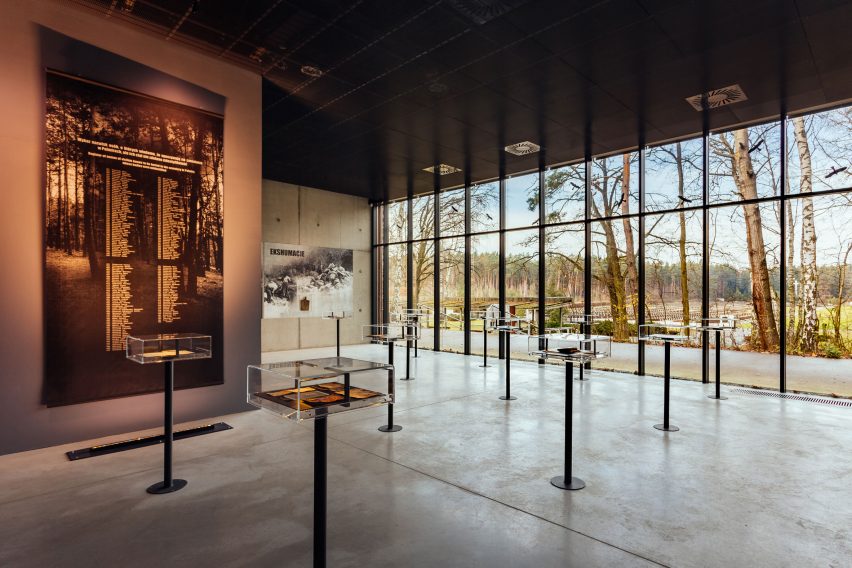
A glass wall at the rear of the building overlooks a cemetery where each of the 2252 memorialised victims are buried.
The following text is from WXCA:
Museum – A Place of Memory Palmiry
The Palmiry Museum Place of Memory lies in a pine-birch forest surrounding the cemetery. The building is a part of the Kampinos National Park, with glass and steel walls, and a green roof. The exhibition space lies among trees – witnesses of past tragedies.
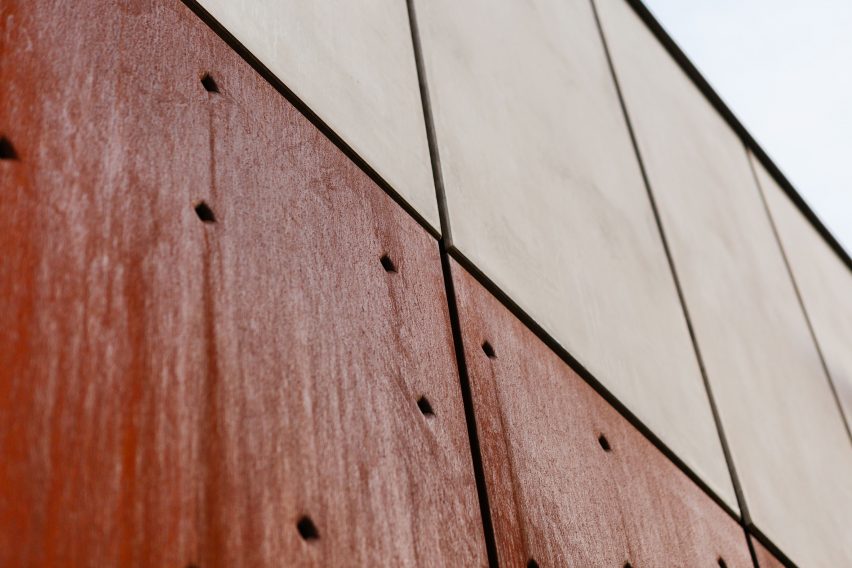
During the Second World War, in Palmir woods, Nazis murdered over two thousand Polish civilians including intellectual elite. The building, ascetic in form and materials, tells a story, and forms a background for the exhibition.
The exhibition part is surrounded by a wall with holes symbolizing bullets.
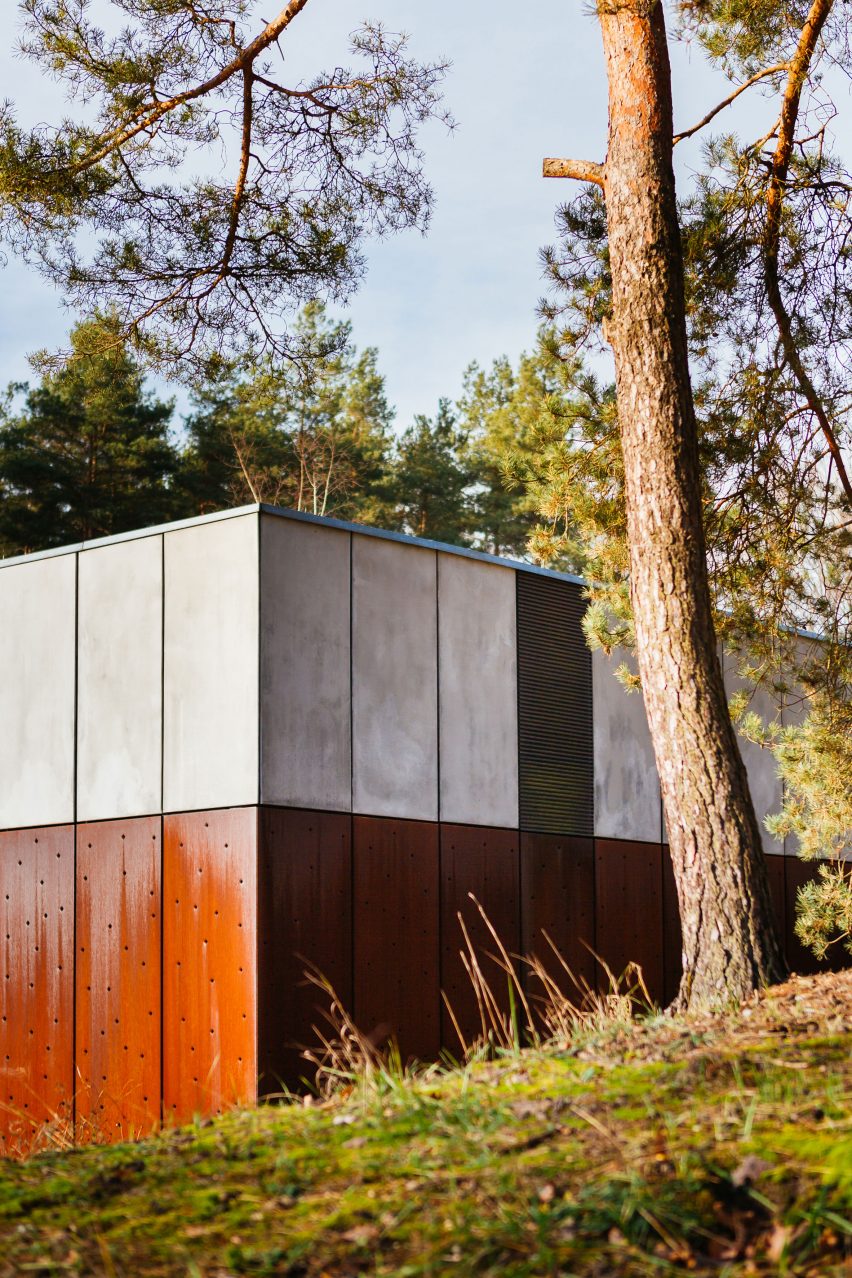
The relation between the building and the surroundings is stressed by greenery inside the building and the patios. The facility opens to the cemetery and three crosses. The idea was to create an architecture of remembrance.
Project credits:
Architects: WXCA
Location: Palmiry, Poland
Design: 2009-2010
Site area: 8738 sqm
Total area: 1133 sqm
Usable floor area: 998,30 sqm
Volume: 4400 m3
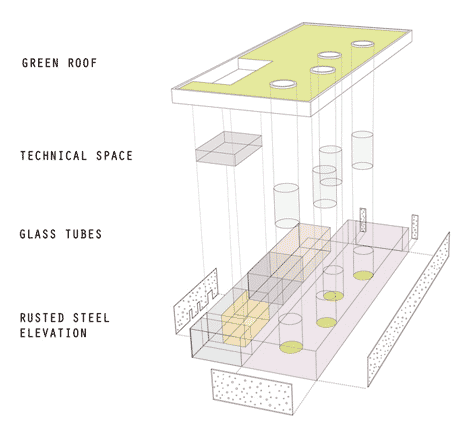
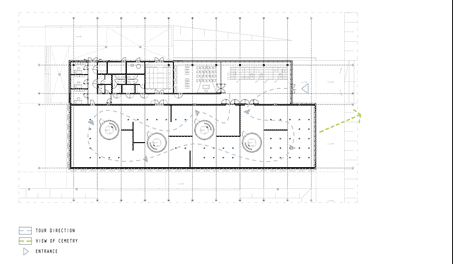
Click above for larger image
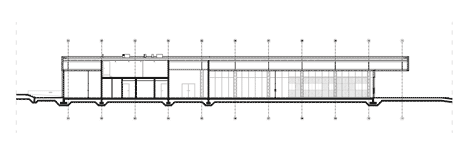
Click above for larger image

Click above for larger image
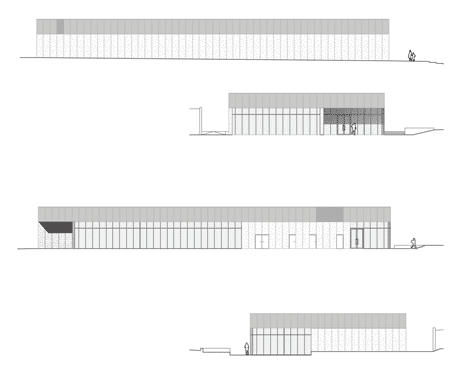
Click above for larger image